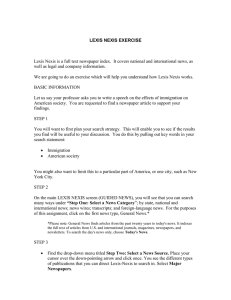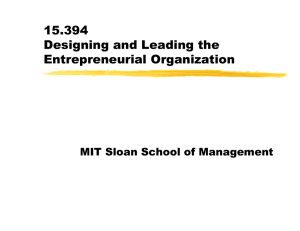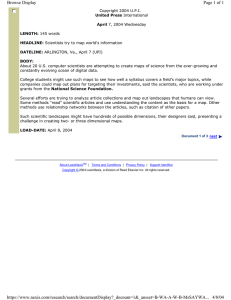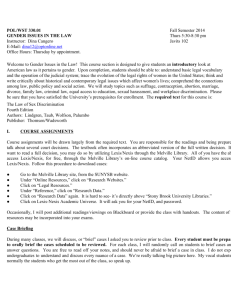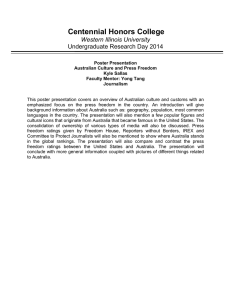NATIONAL EXPOSURE INFORMATION SYSTEM (NEXIS) RESIDENTIAL POPULATION DENSITY METADATA
advertisement
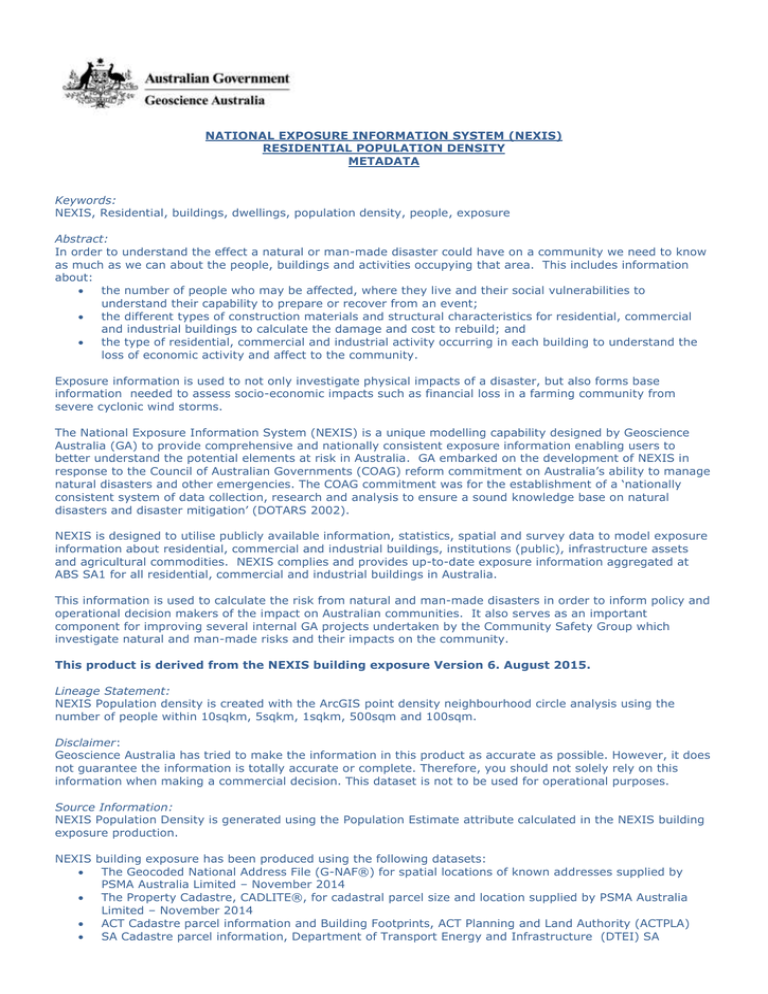
NATIONAL EXPOSURE INFORMATION SYSTEM (NEXIS) RESIDENTIAL POPULATION DENSITY METADATA Keywords: NEXIS, Residential, buildings, dwellings, population density, people, exposure Abstract: In order to understand the effect a natural or man-made disaster could have on a community we need to know as much as we can about the people, buildings and activities occupying that area. This includes information about: the number of people who may be affected, where they live and their social vulnerabilities to understand their capability to prepare or recover from an event; the different types of construction materials and structural characteristics for residential, commercial and industrial buildings to calculate the damage and cost to rebuild; and the type of residential, commercial and industrial activity occurring in each building to understand the loss of economic activity and affect to the community. Exposure information is used to not only investigate physical impacts of a disaster, but also forms base information needed to assess socio-economic impacts such as financial loss in a farming community from severe cyclonic wind storms. The National Exposure Information System (NEXIS) is a unique modelling capability designed by Geoscience Australia (GA) to provide comprehensive and nationally consistent exposure information enabling users to better understand the potential elements at risk in Australia. GA embarked on the development of NEXIS in response to the Council of Australian Governments (COAG) reform commitment on Australia’s ability to manage natural disasters and other emergencies. The COAG commitment was for the establishment of a ‘nationally consistent system of data collection, research and analysis to ensure a sound knowledge base on natural disasters and disaster mitigation’ (DOTARS 2002). NEXIS is designed to utilise publicly available information, statistics, spatial and survey data to model exposure information about residential, commercial and industrial buildings, institutions (public), infrastructure assets and agricultural commodities. NEXIS complies and provides up-to-date exposure information aggregated at ABS SA1 for all residential, commercial and industrial buildings in Australia. This information is used to calculate the risk from natural and man-made disasters in order to inform policy and operational decision makers of the impact on Australian communities. It also serves as an important component for improving several internal GA projects undertaken by the Community Safety Group which investigate natural and man-made risks and their impacts on the community. This product is derived from the NEXIS building exposure Version 6. August 2015. Lineage Statement: NEXIS Population density is created with the ArcGIS point density neighbourhood circle analysis using the number of people within 10sqkm, 5sqkm, 1sqkm, 500sqm and 100sqm. Disclaimer: Geoscience Australia has tried to make the information in this product as accurate as possible. However, it does not guarantee the information is totally accurate or complete. Therefore, you should not solely rely on this information when making a commercial decision. This dataset is not to be used for operational purposes. Source Information: NEXIS Population Density is generated using the Population Estimate attribute calculated in the NEXIS building exposure production. NEXIS building exposure has been produced using the following datasets: The Geocoded National Address File (G-NAF®) for spatial locations of known addresses supplied by PSMA Australia Limited – November 2014 The Property Cadastre, CADLITE®, for cadastral parcel size and location supplied by PSMA Australia Limited – November 2014 ACT Cadastre parcel information and Building Footprints, ACT Planning and Land Authority (ACTPLA) SA Cadastre parcel information, Department of Transport Energy and Infrastructure (DTEI) SA NSW Cadastre parcel information, Land and Property Management Authority (LPMA) QLD Cadastre parcel information, Department of Environment and Resource Management (DERM) NT Building Footprints, Department of Lands, Planning and the Environment. (DLPE) WA Building Footprints, Western Australian Land Information Authority Landgate Launceston, Glenorchy and Hobart Building footprints, Tasmanian Local Government Area Ballarat and Geelong Building footprints, Victorian Local Government Area Geoscience Australia’s National Mapping 1:25,000 scale homestead data The 2011 Australian Bureau of Statistics (ABS) Australian Statistical Geography Standard (ASGS) administrative boundaries and Census of Population and Housing Survey data. Altus Group Cost Management Pty Ltd, 2010. Costing Modules for Residential Buildings. Turner & Townsend Pty Ltd, 2010. CBD and Industrial Building Costing Modules. Rawlinsons Australian Construction Handbook, 32 edition, edited by Rawlinsons Quantity Surveyors and Construction Cost Consultants, Rawlhouse Publishing, Perth, W.A. inc Building Price Index Quarterly updates The Census of Land Use and Employment (CLUE), City of Melbourne The Tasmanian Department of Primary Industries and Water, Office of the Valuer General. The South Australian Department for Transport, Energy and Infrastructure, Office of the Valuer General. Geoscience Australian Building surveys: Adelaide, Brisbane, Melbourne and Sydney CBD Building Surveys; Newcastle, Wagga Wagga, Wetherill Park Building Survey; Urban Stormwater Climate Change impact Study: Alexandra Canal; Kalgoorlie Earthquake Building Survey Positional (Spatial Confidence) Accuracy: The spatial confidence has not been captured as an attribute of the data. The underlying spatial accuracy of the individual buildings as an input into the SA1 aggregation is based on the source data. Building locations are acquired from the GA 25k rural homestead data, building footprint data supplied by ACT, NT and WA State, and VIC and TAS Local Government agencies, and PSMA G-NAF. NEXIS Population Density has been created with 100m cell size. Attribute Accuracy and Completeness: NEXIS Population Density does not provide any attributes. The population density value has been classified into 5 categories: 0 0-5 5.01-10 10.01–100; and, 100+ people. NEXIS dwelling counts differ from the ABS dwelling counts but the 2011 Census is used to compare the outputs and provides a benchmark for NEXIS to improve processes. Logical Consistency: The NEXIS building application is developed using python accessing ESRI geo-processing tools and has inbuilt tests to ensure input data, rules and assumptions are implemented consistently. Data structure has been tested and confirmed to conform to the schema: Attribute names Attribute types Attribute lengths Attribute precision Attribute scale Compulsory attributes populated Completeness: NEXIS aims to capture all Residential, Commercial or Industrial buildings across Australia. Due to the nature of the available data, NEXIS often identifies proposed or partially constructed buildings if the address and/or cadastre parcel has already been created. Attributes Captured: None Last Revision: NEXIS Version 5, August 2014 Related Datasets: NEXIS Version 5, August 2014 Data Maintenance: The dataset will be maintained as required or by formal agreement with Geoscience Australia. Release Regime: Creative Commons Attribution 4.0 International License Contact Organisation: Geoscience Australia Contact Position: Client Services Mail Address: GPO Box 378 Suburb/Place/Locality: Canberra State/Locality: ACT Country: Australia Postcode: 2601 Telephone: 1800 800 173 Facsimile: +61 2 6249 9999 Electronic Mail Address clientservice@ga.gov.au
